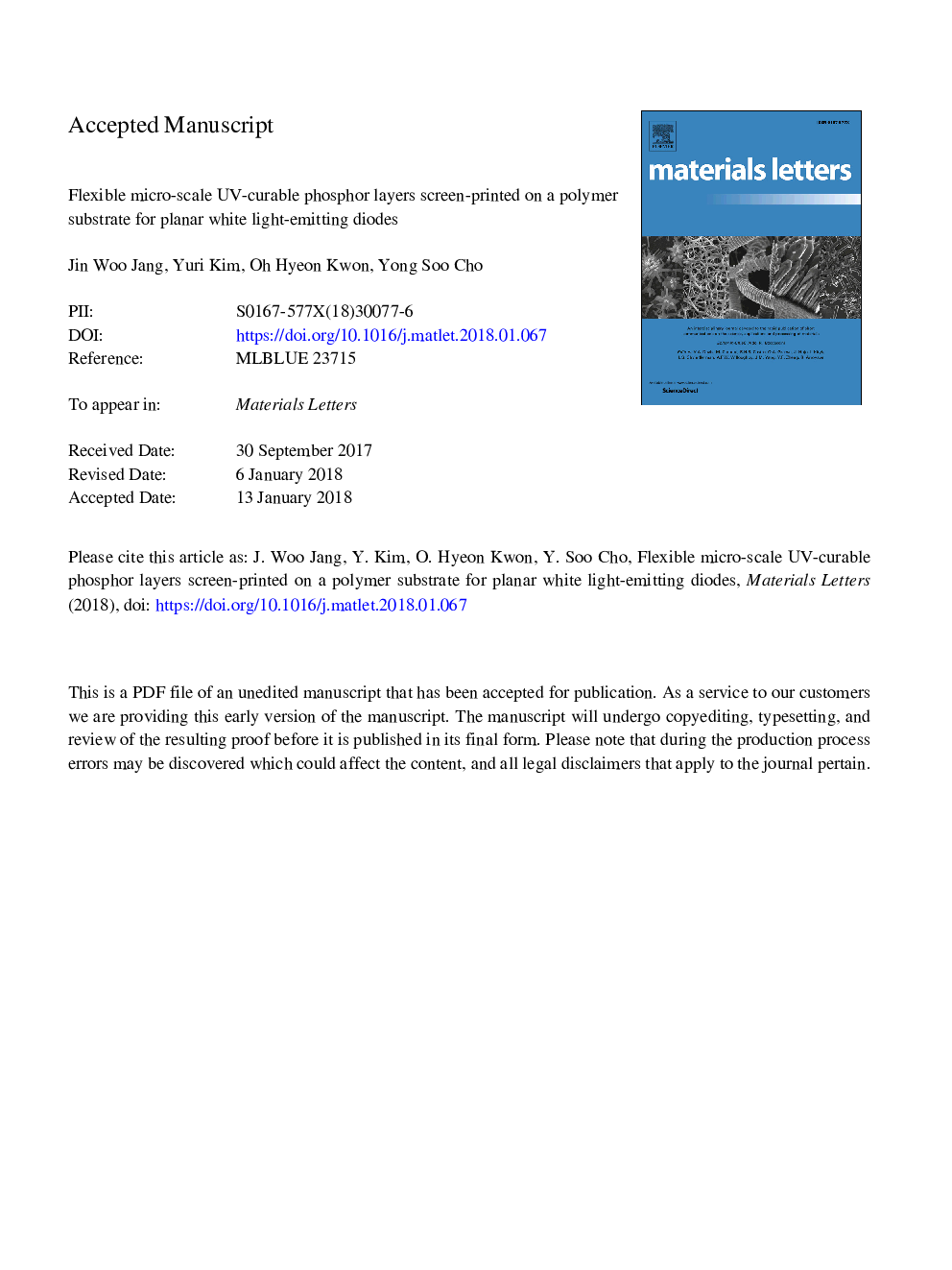| Article ID | Journal | Published Year | Pages | File Type |
|---|---|---|---|---|
| 8014270 | Materials Letters | 2018 | 13 Pages |
Abstract
Different types of the remote phosphor have been investigated to enhance the light-emitting performance with less time-dependent degradations of the emission properties. Here, two different remote phosphor approaches are introduced to optimize the effect of red phosphor in the yellow phosphor-driven white light-emitting diodes (LED)s. These approaches combining the printing technology with a UV-curing process are designed for flexible planar white LEDs with a thin layer thickness of a few tens of micrometer-scale. A screen-printing process was utilized to obtain the mixed or stacked phosphor layers based on commercial yellow and red phosphors. The phosphor particles were found to be dispersed uniformly in the cured UV-polymer matrix. The resultant luminescence characteristics depended on the type of remote phosphor and the relative content of red phosphor. The mixing approach was more effective in raising color rendering index (CRI) while minimizing the reduction of luminous efficacy. As a result, a luminous efficacy of â¼101â¯lm/W and a CRI of â¼83.1 were obtained for the mixed sample with 5â¯wt% red phosphor, which correspond to a decrease of â¼11.2% and an increase of â¼9.3% compared to the reference sample.
Related Topics
Physical Sciences and Engineering
Materials Science
Nanotechnology
Authors
Jin Woo Jang, Yuri Kim, Oh Hyeon Kwon, Yong Soo Cho,
